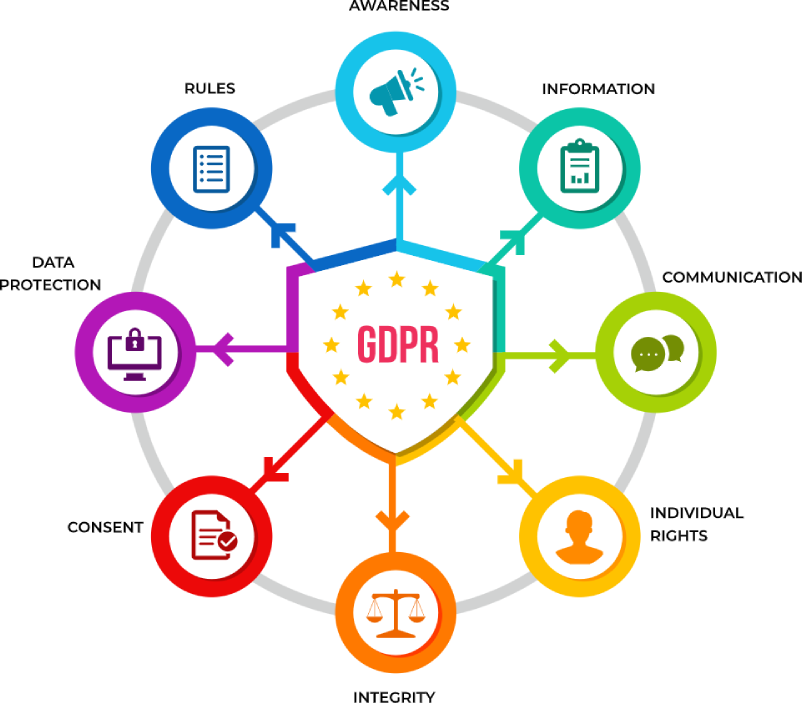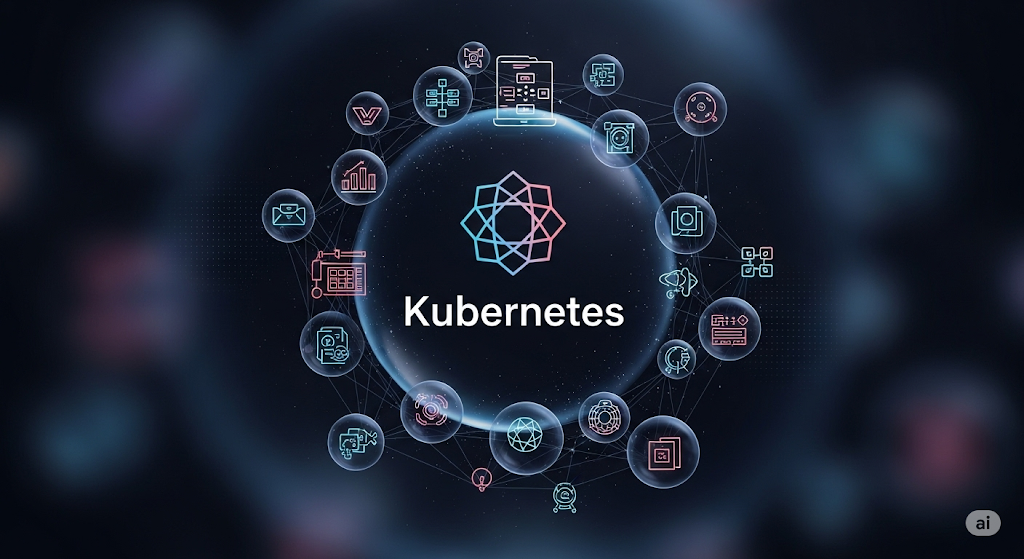- Data sovereignty ensures data follows the requirements of a specific country, region or client.
- A sovereign Cloud is one that meets data sovereignty requirements
- The U.S. CLOUD Act raised concerns about foreign access to data.
- The demand for data sovereignity is growing in the EU and worldwide
- Hyperscalers are rushing to meet new regional requirements
- Alternative cloud providers have an opportunity to meet changing d
Data sovereignty has moved from niche legal concern to a central driver of infrastructure decisions. For Cloud service providers, data sovereignty and the sovereign Cloud are shaping everything from architecture to market access.
In this guide, we explain the key concepts, how we arrived at this point, why data sovereignty matters to Cloud and hosting providers, and how hyperscalers are adapting.
Definitions and concepts: data sovereignty, residency, localization, sovereign Cloud
It’s always helpful to spell out the meanings of key terms:
- Data sovereignty: The principle that data is subject to the legal regimes (laws, courts, regulators) where it is stored or processed.
- Data residency: A technical/operational guarantee that data remains physically located in a particular geography (for example, an EU country).
- Data localization: Legal mandates requiring certain categories of data (e.g. health records, government data) to reside within national borders.
- Sovereign Cloud/sovereign infrastructure: Cloud and hosting offerings explicitly engineered to meet national or regional policy, legal and operational requirements by ensuring local control, certified governance, local staffing, and transparent accountability.
- Cross-border data transfer mechanisms: Legal tools (such as standard contractual clauses, adequacy decisions, bilateral treaties) that allow data to flow across jurisdictions while preserving privacy and regulatory protections.
Together, these concepts frame the trade-offs and constraints that Cloud and hosting providers must address when they operate globally.
“Organizations may need to reevaluate their relationships with large providers and could consider alternative partnerships”
McKinsey CIO Roundtable
Why data sovereignty is critical to Cloud services and hosting architectures
1. Compliance and market access
In Europe, many enterprises (especially in regulated industries like finance, healthcare, and the public sector) treat regulatory compliance as a gating requirement. To win their business, Cloud services and hosting providers must demonstrate strong alignment with GDPR and evolving EU policy.
The Schrems II decision in 2020 invalidated the EU–US Privacy Shield, forcing per-case assessments of transfer mechanisms for cross-border data. As a result, Cloud infrastructure vendors must now prove that their data flows and transfer controls satisfy the stricter scrutiny European customers demand.
2. Political risk, trust, and procurement politics
Governments, defense bodies, and even large private enterprises prioritize vendors that can credibly restrict external (especially foreign government) access to data. When national digital sovereignty is a public policy goal, procurement criteria often include demonstrable local control of data, restricted access by foreign staff, and clearly defined legal boundaries. In such environments, providers lacking robust sovereignty controls can be excluded from critical contracts.
3. Technical, architectural and cost implications
Delivering on data residency and sovereign cloud requires greater architectural complexity: more regions and availability zones, localized storage and compute, distributed networking, and stringent key management by geography. These impose higher capital and operational costs for Cloud providers, reducing their margin in sovereignty-sensitive markets or opening space for local competitors in the hosting and data centre sectors.
4. Staff, operations and supply chain control
Sovereignty is not just about physical racks—it’s about who runs them. Some sovereignty models demand that critical operations (such as access to backups, maintenance, audits) be conducted by local personnel under national control. They may also require supply chains (hardware, software, firmware) to be auditable and free from foreign dependencies. These requirements shape how hyperscalers recruit staff, structure global ops, and manage vendor relationships.
Europe leads the push—regulatory and market dynamics

Source: Axis Technolabs
In Europe, the framework of GDPR, judicial decisions, and proactive industrial strategy combine to make data sovereignty a commercial imperative:
- GDPR gives regulators enforcement powers over data practices and cross-border transfers.
- The Schrems II ruling introduced uncertainty into U.S. transfers, demanding rigorous legal and technical safeguards (including supplementary measures) for each transfer.
- EU policy initiatives—such as the Gaia-X federated data ecosystem—aim to build a standards-based infrastructure for secure, interoperable data exchange under transparent governance. The push is toward “digital autonomy” for Europe, and Cloud/hosting providers must align with it to maintain relevance in the market.
- The Cloud Infrastructure Service Providers in Europe association (CISPE) has produced a Sovereign Cloud Manifesto, suggesting steps to rebalance the Cloud market.
Because of this environment, Cloud providers and hosting services must not just declare “our servers are in Europe”—they must provide transparent operations, audited governance, and customer-controlled security mechanisms if they want to be considered trustworthy by European enterprises.
The U.S. context: CLOUD Act and regulatory pressures
In 2018, the Trump administration passed the Clarifying Lawful Overseas Use of Data Act (CLOUD Act), which allows U.S. federal law enforcement to compel U.S. providers to disclose data stored overseas, subject to certain treaties or bilateral agreements. This meant that even if data is physically located outside the U.S., vendors headquartered in the U.S. might still be legally bound to surrender it.
The CLOUD Act heightened sovereignty concerns globally. For global data buyers wary of foreign government intrusion, the Act served as a wake-up call: physical data residency is insufficient without controls on operational access and jurisdictional exposure.
As a result, Cloud and hosting providers now increasingly offer products featuring customer-managed key encryption, operational separation, and physically isolated infrastructure so that even the provider’s own systems cannot access data without explicit customer action.
How hyperscale Cloud providers are adapting their offerings
Hyperscalers like AWS, Microsoft Azure, and Google Cloud recognise that sovereignty concerns threaten growth in many jurisdictions. Their strategies—and investments—increasingly incorporate sovereignty by design:
Expanding local regions and availability zones
By building more regional operations and data centers in Europe, Latin America, Africa and Asia, providers allow data and compute resources to stay geographically localized. They also introduce “Local Zones” to bring low-latency access closer to major population centers.
Sovereign Cloud products
Some providers now market “sovereign” Cloud platforms with dedicated governance, local operational control, and separation from their global operations. In Europe, AWS has signaled that only Europeans will run its European sovereign Cloud service, highlighting the importance of trust and localized control.
Hybrid/on-prem appliances
Solutions like AWS Outposts or Azure Stack let enterprises run Cloud-consistent infrastructure within their own data centres, enforcing local data residency while still tapping into Cloud innovations.
Customer key management and encryption tools
Hyperscalers are offering cryptographic key custody models where customers (or national agencies) hold the keys, limiting providers’ internal ability to decrypt data without authorization.
Audited governance, certification and third-party oversight
To reassure clients, sovereign Cloud offerings often include independent audits, certifications (e.g. ISO, SOC, national security standards), and governance models where local authorities or customers have oversight.
These moves aren’t just technically motivated. They are vital commercial defense and positioning: in high-stakes markets like European public procurement, sovereignty-sensitive industry verticals, and national infrastructure programs, only providers that can credibly offer trust and legal alignment will compete.
Global snapshots: Brazil, Africa, and the sovereignty imperative
Brazil
Brazil’s data protection law, LGPD (Lei Geral de Proteção de Dados), shares many principles with GDPR. In response, Cloud providers offering services in Latin America have increasingly emphasised local infrastructure and residency guarantees. For example, AWS has long maintained a São Paulo region, enabling Brazilian enterprises and public institutions to use Cloud services with guaranteed local residency. Their intention is to gain a competitive edge in local procurement and compliance-sensitive markets.
Africa
The regulatory landscape across Africa is more uneven: while countries like South Africa have strong privacy laws (e.g. POPIA), others remain in early regulatory development. Recognizing both the latency and sovereignty requirements of African customers, Cloud providers have moved to establish more regional infrastructure, reducing legal friction, improving performance, and increasing trust among local buyers.
How infrastructure buyers, MSPs, and hosting providers should plan
1. Map your data flows comprehensively
Make an inventory of where different data classes originate, how they move, where backups are stored, and where third parties (analytics, logging, backup) access them. This mapping is fundamental to designing compliant architecture.
2. Choose and evaluate cross-border transfer tools carefully
If data must cross borders, ensure your deployment leverages up-to-date standard contractual clauses, binding corporate rules or adequacy decisions, and that your provider performs Schrems II–style risk analysis and supplemental measures.
3. Demand operational guarantees
Don’t accept geographic claims at face value. Ask for evidence of local staff for critical functions, separation of regional operations, audited access controls, and contractual commitments about noninterference or governmental access.
4. Architect hybrid or split models for sensitive workloads
Where sovereignty is most critical (such as classified data, national infrastructure, regulated industry data), consider on-prem or sovereign-appliance models that keep control local while leaving less sensitive workloads in global Clouds.
5. Monitor regulatory evolution continuously
EU policy (for example, the Data Act, Digital Services Act or Digital Markets Act) is in flux. Member states may adopt additional national localisation requirements. Track these changes and build flexibility into contracts and architectures.
6. Partner strategically with regional and sovereign providers
In many markets, local hosting or Cloud providers specializing in sovereignty compliance may be your best ally—especially where they offer richer local control, regulatory knowledge, and regional trust.
Conclusion: Data sovereignty will only become more important
Data sovereignty is not simply a legal checkbox or a regional sales differentiator—it has become foundational to how Cloud services and hosting are designed, sold, and consumed. In Europe, regulatory rigor, judicial rulings and industrial strategy have made it nearly impossible for infrastructure providers to ignore.
In other global markets, sovereign requirements are rising, and local regions offer growth pathways. Meanwhile, acts like the U.S. CLOUD Act have demonstrated that physical location alone cannot guarantee jurisdictional immunity.
Hyperscale providers know this—which is why they are rearchitecting their footprints, offering sovereign Cloud variants, enabling customer key control, and restructuring their operations to appease trust and compliance demands. But there is room for nimble hosters and IaaS providers to differentiate by embedding control, locality, transparency and auditability as core offerings. For enterprises, the message is clear: treat data sovereignty as a design constraint, not an afterthought.
Map your flows, demand credible guarantees, and build architectures that can evolve with regulatory tides. Because in the evolving digital order, sovereignty is one of the strongest deal-makers or deal-breakers when it comes to trust—and market access.



